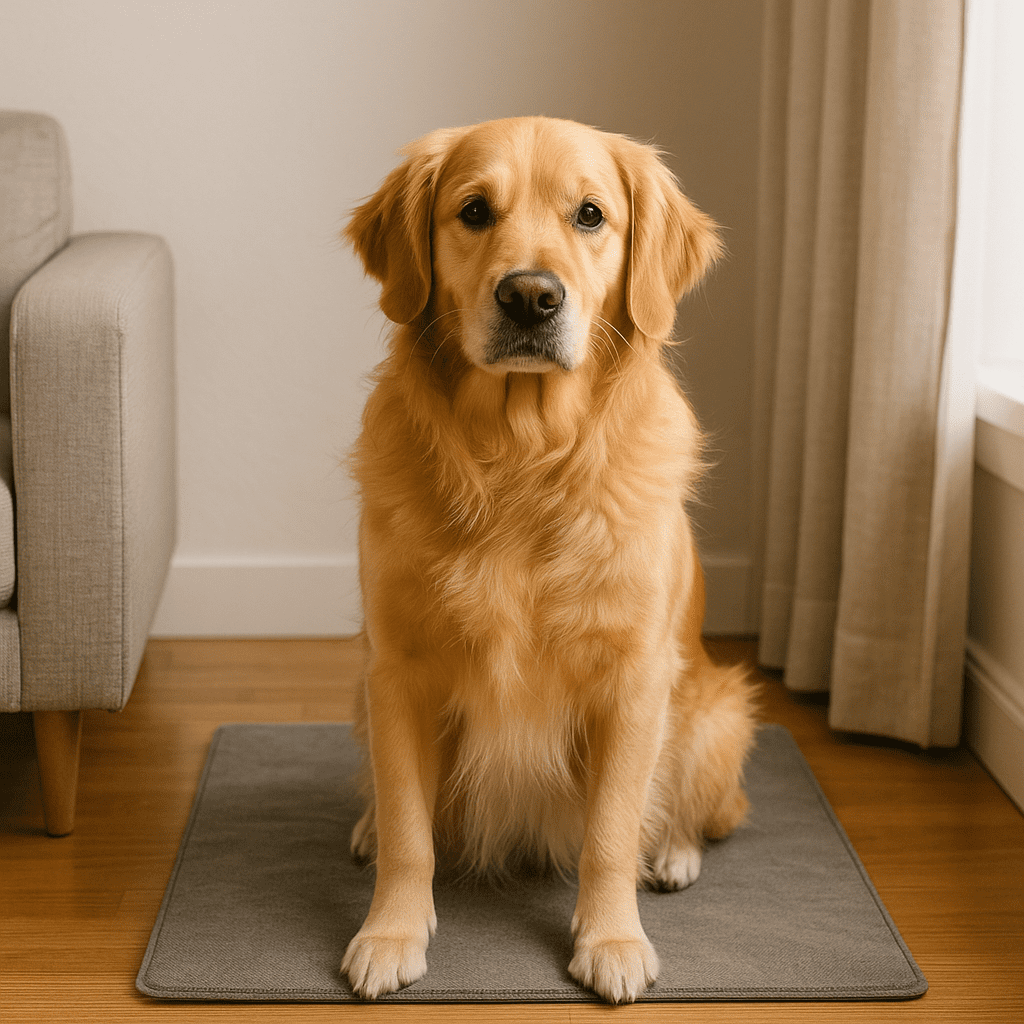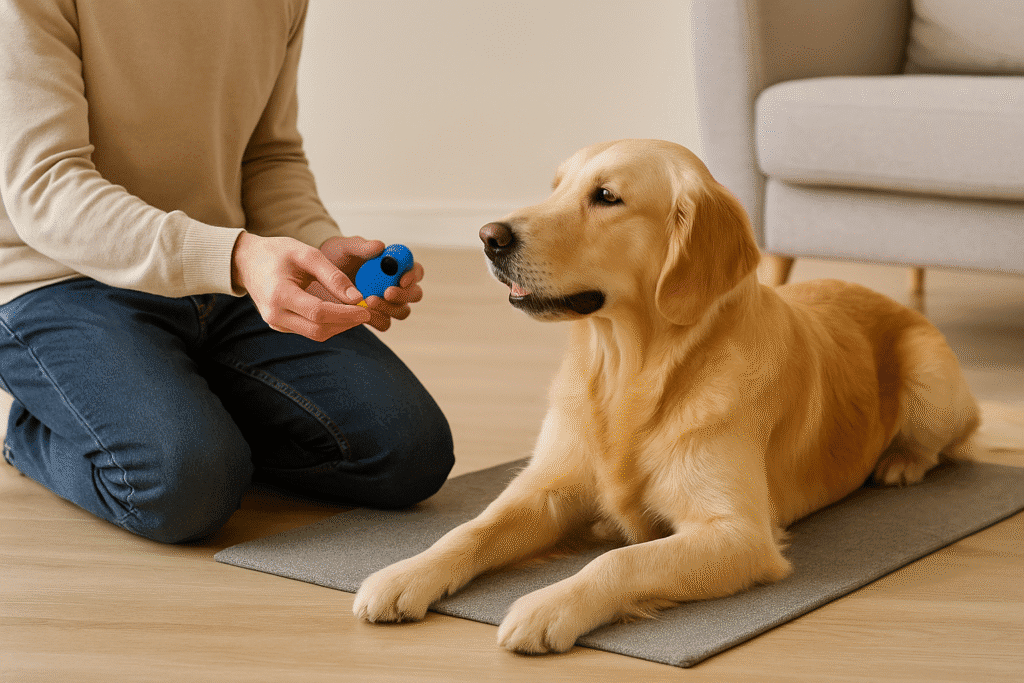Want a calmer dog at home? This guide shows you how to teach your dog to settle on command using step-by-step training, calm reinforcement, and relaxation methods. Help your dog manage excitement, reduce anxiety, and learn to relax in any situation.
Introduction
Teaching your dog to “settle” on command is one of the most valuable training skills for creating a peaceful household. Unlike “sit” or “stay,” the settle command encourages relaxation, reducing anxiety and hyperactivity. This guide explains effective calm training techniques so you can raise a well-balanced, confident companion.

Why Teach the Settle Command?
The settle command is especially useful for dogs that get overly excited or anxious in certain environments. Whether your dog barks excessively, jumps on guests, or struggles to calm down after play, learning to settle provides a safe and reliable way to redirect their energy.
How to Teach Your Dog to Settle on Command
Step 1: Choose the Right Environment
Start training in a quiet, distraction-free environment. Use a comfortable mat, dog bed, or designated relaxation spot where your dog can associate calm behavior with positive outcomes.
Step 2: Capture Calm Behavior
Watch for natural moments of relaxation—such as when your dog lies down calmly—and mark the behavior with a clicker or verbal cue. Reward immediately with a treat or praise.
Step 3: Introduce the “Settle” Cue
Once your dog understands calm behavior brings rewards, add the cue word “settle.” Say it as your dog begins to relax, then reward generously.

Step 4: Extend Duration
Gradually increase the amount of time your dog stays settled before receiving a reward. Start with 5 seconds and build up to several minutes.
Step 5: Add Distractions
Once your dog can settle at home, introduce mild distractions. Slowly progress to more challenging environments such as the park or during visits from guests.

Calm Training Techniques That Work
- Use Positive Reinforcement: Never force your dog to settle; reward calmness instead.
- Practice Short Sessions: Frequent, short sessions are more effective than long, stressful ones.
- Incorporate Relaxation Cues: Pair “settle” with calm body language, soft voice tones, and deep breaths.
- Consistency: Train regularly in different environments to strengthen the command.
Common Mistakes to Avoid
- Rewarding your dog while they are still restless.
- Using “settle” in an angry or frustrated tone.
- Expecting instant results—settle training requires patience.
When to Use the Settle Command
- During meals to prevent begging.
- When guests arrive to reduce jumping and excitement.
- Before bedtime for a peaceful night.
- In public spaces like cafes or waiting rooms.
FAQs about Teaching Your Dog to Settle
How long does it take for a dog to learn the settle command?
Most dogs begin responding to settle training within a few weeks of consistent practice.
Can puppies learn to settle?
Yes, puppies can learn, though their short attention spans mean sessions should be brief and positive.
What if my dog refuses to relax?
Use calming aids like puzzle toys, chews, or natural supplements to help reduce excess energy before training sessions.
Is settle training good for anxious dogs?
Absolutely. It can be a powerful tool to reduce stress and build confidence in anxious dogs.
Can I use settle instead of “down” or “stay”?
Settle is different—it emphasizes relaxation, not just physical position. Many owners use it alongside “down” and “stay.”
Conclusion
Learning how to teach your dog to settle on command provides long-term benefits for both you and your pet. Through patience, consistency, and calm reinforcement, your dog will develop the ability to relax in almost any environment, making daily life more enjoyable and stress-free.
Resources & Further Reading
- (Internal link: For beginner-friendly methods, see our Clicker Training for Dogs Guide.)
- (Internal link: Learn how to avoid common mistakes in our Puppy Training Mistakes Guide.)
- (Outbound link: Read professional guidance from VCA Hospitals: Teaching Calm & Settle.)
CTA: Want more training strategies? 👉 See more training guides here.

